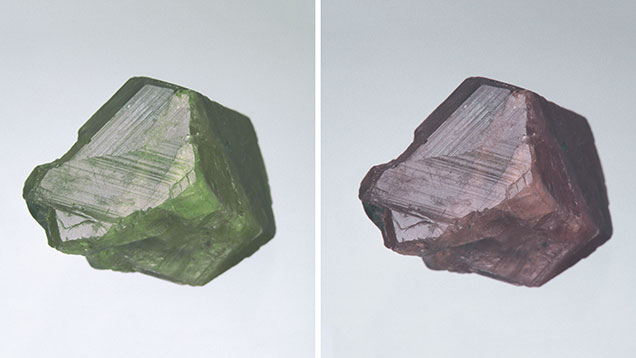Alexandrite Description
Alexandrite’s dramatic color change is sometimes described as “emerald by day, ruby by night.” Other gems also change color in response to a light-source change, but this gem’s transformation is so striking that the phenomenon itself is often called “the alexandrite effect.”

Even in its rough form, this 70.94-carat alexandrite shows attractive color change.
Alexandrite is also a strongly pleochroic gem, which means it can show different colors when viewed from different directions. Typically, its three pleochroic colors are green, orange, and purple-red. However, the striking color change doesn’t arise from the gem’s pleochroism, but rather from the mineral’s unusual light-absorbing properties.Because of its scarcity, especially in larger sizes, alexandrite is a relatively expensive member of the chrysoberyl family. It shares its status as a June birthstone with cultured pearl and moonstone.



